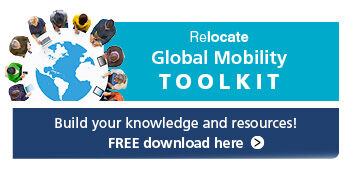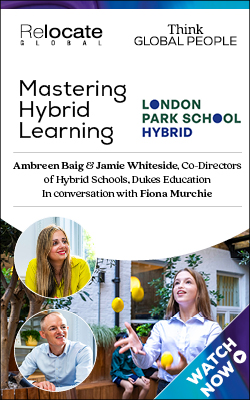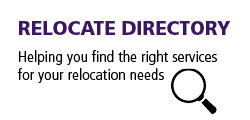Getting started in workforce planning for now and the new normal
How to build an effective workforce for now and into the future, beyond remote working tips.

Building an effective workforce, beyond remote working tips
According to Linkedin’s latest UK workforce index, UK professionals across the board felt less confident in their industry two years from now with those belonging in the media and communication sector feeling the least confident.Plenty has been written about the importance of engaging with and maintaining a productive workforce during the crisis. But as some countries start to relax their lock down measures we need to move beyond tips on, and effective management of remote working.To handle the tough decision making that comes with the economic chaos we’re witnessing, leaders have been working to ensure their organisation is agile enough to meet the demands of today, with the ability to pivot rapidly against a clear purpose to make the right decisions for tomorrow.Getting the right people, in the right place, at the right time and cost will be central to success and effective workforce planning, will be critical to this. Without it how can you be sure you are making the right, responsive and responsible resourcing decisions for your business and your employees?Moving workforce planning from the "too hard" pile
Workforce planning and strategy seems to feature on every board room agenda, yet in most organisations is not effectively executed against at a strategic level. It seems to become very responsive or fall into the "too hard" basket - but it does not have to.One of the biggest mistakes we see is people confusing workforce planning with a plan. We have all heard the old cliché: fail to plan, plan to fail. But, how often have things ever gone to plan?Workforce planning is a process, not an annual to-do. At its heart, workforce planning is aligning the organisational needs and people strategy.It does not need to be complex. And, it can be adjusted to suit the size and maturity of your workforce programme.Read more about talent management during Covid-19 and beyond:
- Video conferencing becomes a Zoom boom
- The challenges of Coronavirus and how to protect your employees
- Wellbeing has plummeted during the Coronavirus lockdown. What can employers do to help with the mental wellbeing of their employees?
Getting started in workforce planning during a crisis
A simple way to get started is to have a documented check-in with your business unit leaders every other week. Most businesses have already done this as a response to COVID-19: maintaining this discipline and identifying the workforce priorities, their anticipated resourcing needs and critical dependencies on an ongoing basis.The answers do not need to be perfect, or questions cumbersome. The process can be as simple as a live document update every other week.The point is to get a concrete picture of what you are dealing with, so you can make the right talent supply chain decisions for the here and now.Workforce planning for different scenarios
Once you have the above in place to deal with the right now you’ll need to develop a workforce planning group, to identify a range of realistic variables and resourcing options, accounting for fluctuations in demand, productivity, skills availability and an ever-evolving world of work.Developing scenarios and stress-testing how your workforce programme will stand up to these variances allows you to identify triggers for action. So, you are no longer reacting, but have clear well-thought out options to handle a range of possible outcomes quickly when the time comes.You will then need to be sure you are tracking the signals that different scenarios are becoming more likely, so you are primed to act.Planning with purpose
Finally, you will need to establish what the next normal means for your business after the immediate crisis passes: what will have changed forever, what new ways of working do you want to keep and what does this mean for your workforce and then communicate it.Workforce strategy should reflect business strategy and your organisation’s purpose. Those who work with and for you want to know what an organisation stands for. And this stands true during this crisis more than ever. As whilst your workers may be physically separated, they are united by your purpose and values. This is critical to maintaining and potentially reforming your organisational culture which forms the foundation for future success.Act for now and next
Whilst no-one can accurately predict with any certainty what will come next, it is clear responsive and responsible workforce planning will be required to navigate the now and the next normal. Because the skills you need today will not be the same as those you need tomorrow.This uncertainty will require you to cycle through your workforce planning process more often than ever. Scenarios will need to be refined and refreshed. Don’t worry about perfection. Each iteration will improve over time.But start today, so when the next stage of the COVID-19 crisis hits you are the first to know and fastest to act, because you’ll have done the thinking, identified the people and created the plans to do so.Find out more about Hays Talent SolutionsAccess more articles about talent management and HR.
Subscribe to Relocate Extra, our monthly newsletter, to get all the latest international assignments and global mobility news.
Relocate’s new Global Mobility Toolkit provides free information, practical advice and support for HR, global mobility managers and global teams operating overseas. Access hundreds of global services and suppliers in our Online Directory
Access hundreds of global services and suppliers in our Online Directory
©2025 Re:locate magazine, published by Profile Locations, Spray Hill, Hastings Road, Lamberhurst, Kent TN3 8JB. All rights reserved. This publication (or any part thereof) may not be reproduced in any form without the prior written permission of Profile Locations. Profile Locations accepts no liability for the accuracy of the contents or any opinions expressed herein.




































